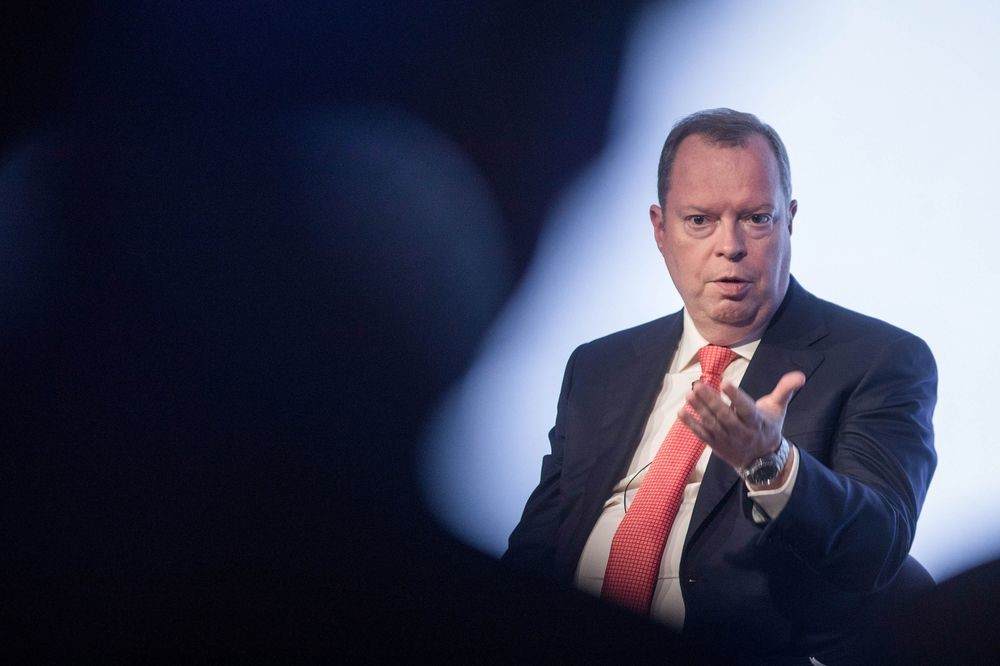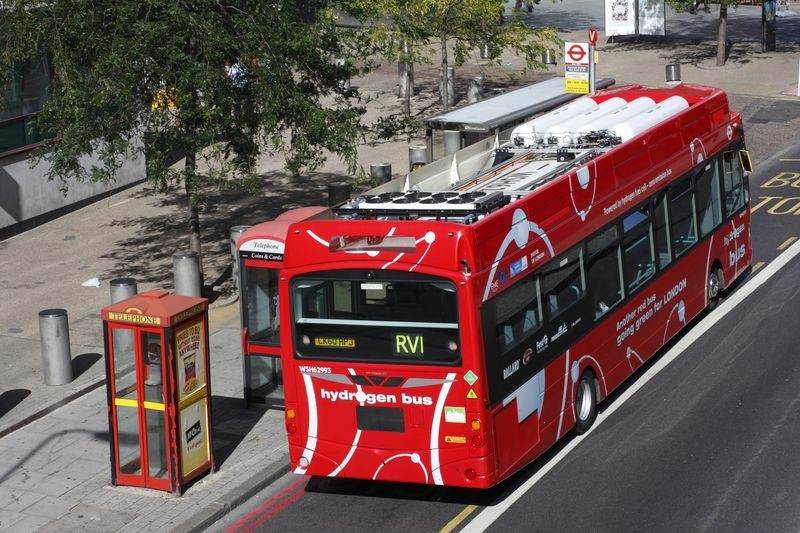The oil kingdom is building a $5 billion clean energy plant to reduce its dependence on petrodollars.
This article was first published on the overseas website, welcome to moveletschuhai.comSee more global business related information.
This article is selected from Bloomberg, the original title Saudi Arabia’s Bold Plan to Rule the $700 Billion Hydrogen Market, by Verity Ratcliffe
On the shore of the Red Sea, the sun is hot and the breeze is blowing. Saudi Arabia is trying to prove to the world that the northwestern territory of this ancient kingdom will become the best choice for building a global green hydrogen energy center.
In recent years, governments and industries in various countries have been looking for alternative energy sources with less pollution, and hydrogen energy is one of the options. As the world’s largest crude oil exporter, Saudi Arabia sees a potential crisis. It does not want to leave the booming hydrogen energy business to Europe or Australia, thus completely losing its right to speak in the energy industry. Therefore, Saudi Arabia is building a US$5 billion factory called Helios Green Fuels, which is entirely driven by solar and wind energy. Upon successful delivery and operation in 2025, the plant will become one of the largest green hydrogen manufacturing plants in the world.
This green hydrogen plant is part of Saudi Arabia’s Neom Smart City (also known as the New Future City) project. This smart city project will turn a desert the size of Belgium into a metropolis driven by clean energy, and this task will ultimately It fell on Peter Terium, former CEO of Germany’s largest public facility construction company RWE AG and clean energy company Innogy SE. Among them, Terium is responsible for the construction and operation of the Helios plant. His success also determines whether a country that relies heavily on petrodollars can transform into a provider of clean energy.
Peter Terium, former CEO of Innogy SE and head of the Helios plant. Photography: Simon Dowson / Bloomberg
“I have never heard of similar tasks and challenges”, Terium said, “In the past two years, my thinking has mainly revolved around starting from scratch and planning. And now we have fully entered the implementation phase.”
The application range of hydrogen energy is becoming wider. From niche power sources that are only used for airships, rockets and nuclear weapons, to the addition of automobiles, power supply and other sectors, the commercial and civilian value of hydrogen energy is being highlighted. The EU pledged to invest 500 billion US dollars to expand hydrogen-related infrastructure construction. But for hydrogen to become an important part of the energy transition, there are still some technical and application barriers that need to be overcome. Others pointed out that Saudi Arabia has long considered the energy transition, but the effect has been poor. Before that, Saudi Arabia also hoped to make use of its abundant solar energy resources to make the transition, but there were only plans and no implementation.
This time, Saudi Arabia is likely to become a “dark horse” in the hydrogen race track.
Why hydrogen energy
Major countries in the world are re-emphasizing hydrogen energy projects. The United Kingdom plans to build 10 hydrogen heating projects, China actively deploys hydrogen energy buses and commercial vehicles, and Japan plans to use hydrogen energy for steelmaking. The US President’s climate envoy and former Secretary of State Kerry urged energy companies of all countries to embrace the “great opportunity” of hydrogen energy.
For the Helios factory, this means countless potential users. According to BloombergNEF (BNEF) estimates, by 2050, the market for hydrogen energy will reach 700 billion U.S. dollars.
The popularization of hydrogen energy and other clean energy will greatly enrich the types of energy available in the world. “The world will witness a more diverse and more flexible energy mix.” said Shihab Elborai, partner of consulting firm Strategy& Dubai. “The abundance of energy types has greatly improved the world’s ability to fight uncertain risks.
In the long run, the prospect of hydrogen energy is broad. But in the short term, hydrogen may not be the best choice. The cost of hydrogen (green hydrogen) produced in an environmentally friendly manner is quite high. According to the International Renewable Energy Agency, the current cost of producing one kilogram of green hydrogen in European and American countries is close to US$5. Hydrogen is difficult to store and flammable, which makes it difficult to achieve large-scale manufacturing and transportation.
Why Saudi Arabia
As mentioned above, the use of renewable energy to produce hydrogen in Europe and the United States is costly, but Saudi Arabia has a way to overcome this problem. This West Asian country has unique advantages in hydrogen energy production-permanent and stable sunlight and wind energy, and large tracts of idle land. According to BNEF data, the cost of Helios to produce hydrogen in Saudi Arabia is expected to reach the lowest in the world, that is, 1.5 US dollars per kilogram, which is even lower than the current cost of using non-renewable energy to produce hydrogen.
Terium stated that the cost of producing renewable energy in Europe is indeed higher. Even after the enactment of the Clean Energy Production Stimulus Act (Green Deal), the European clean energy market will still experience supply shortages. “They cannot produce all hydrogen energy independently,” he said, “because many countries do not have enough wind resources to produce green hydrogen.”
Terium is Dutch. He joined the Neom Smart City Program in 2018 and was initially responsible for planning urban energy and water supply and drainage strategies. Later, his enthusiasm and sensitivity in electric vehicles and digital network technology were discovered and recognized by the investors behind the Neom project.
The most important one among them is Crown Prince Mohammed bin Salman. The 35-year-old Saudi ruler wants to use the new technology nurtured and cultivated in the Neom program to help Saudi Arabia complete its economic transformation. The hydrogen plant is an important part of this vision.
The direction of the crown prince’s decision is correct. The replacement of fossil fuels such as petroleum by new energy sources has become an irreversible trend. Under the influence of global warming, clean energy shocks, and oil price fluctuations, oil exporting countries are expected to lose as much as 13 trillion U.S. dollars by 2040, and Saudi Arabia will be one of the most affected countries.
It’s just that the crown prince’s wishes are ambitious and challenging. First of all, the 500 billion US dollars invested by the Crown Prince to Neom is so much that some people doubt whether the managers of Neom will invest all their money in the direction of new energy or technology; in addition, the success of Saudi Arabia’s hydrogen energy strategy is not only Depends on this sample project. On the whole, Saudi Arabia’s renewable energy production capacity is still very small, and Saudi Arabia is an absolute recruit in the field of new energy.
But in any case, it is a matter of the future and destiny of the country. Saudi Arabia is serious about this matter. The government is planning the construction of a hydrogen energy plant with Acwa Power, a power facility construction company in Riyadh, Saudi Arabia. Acwa Power’s equity is owned by Saudi Arabia’s sovereign wealth fund and Air Products and Chemicals Inc., which is headquartered in Allenton, Pennsylvania, and has a market value of US$58 billion.
“As the first gigawatt factory, we will beTake advantage of one-step innovation and development,” Terium said, “This is definitely not the end of the game.
For the difficulty of transporting hydrogen, Helios has also come up with a solution in advance. After commissioning, Helios will produce 650 tons of hydrogen per day through electrolysis, and convert this hydrogen into ammonia that is easier to store and transport. Air Products will purchase all ammonia and then convert the ammonia back to hydrogen after delivery to the customer.
It is estimated that the hydrogen produced by the factory will be enough to maintain the operation of about 20,000 buses after it is put into production. Currently, there are about 3 million buses in operation worldwide. According to BNEF data, by 2050, new energy buses will account for 30% of the number of global buses, with growth mainly coming from China and the European Union.
Hydrogen buses in London. Figure Getty Images
This factory has attracted the attention of foreign buyers. The German government has stated that it needs a large amount of green hydrogen and hopes that Saudi Arabia can become its supplier. “Although production costs are still high at this stage, investors’ strong interest in Saudi Arabia gives us reason to believe in the country’s capacity for mass production of hydrogen.” A spokesman for the German Ministry of Energy said.
Of course, this hydrogen plant still has some shortcomings. For example, even if it runs at full capacity, the plant will only be able to produce hydrogen energy equivalent to 15,000 barrels of oil storage per day, which is equivalent to the 900 that Saudi Arabia mines per day. The strength of 10,000 barrels of crude oil is definitely a drop in the bucket. But even so, being able to occupy a place in the clean energy market has found a new way out for traditional oil countries.
“This is currently the highest priority project in Saudi Arabia and is personally interrogated by the crown prince, so the project leader must make some achievements.” Said Shihab Elborai, Dubai partner of consulting firm Strategy&.
Text | Guo Yingran
Pictures | Bloomberg, Getty Images, Tuworms
Let’s CHUHAI CLUB Salon Event Preview
On April 15th, the first salon of LET’S CHUHAI CLUB, created by going overseas, will land in Shenzhen. This event will start from several hot topics such as brand going overseas, cross-border e-commerce, financial technology and overseas marketing, and jointly discuss how Chinese companies going overseas to plan and move under the wave of globalization, and discuss the current crises and challenges they are facing.
Welcome to scan the code to fill in the form and register for offline participation.






